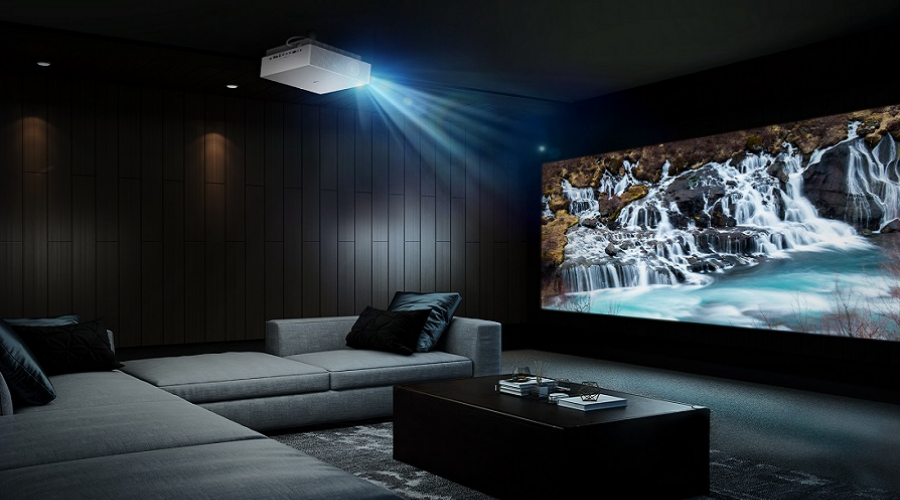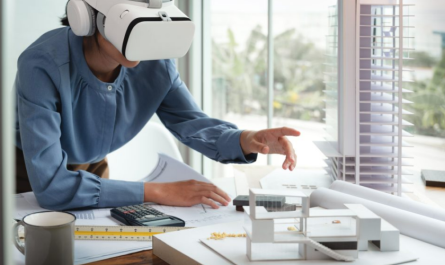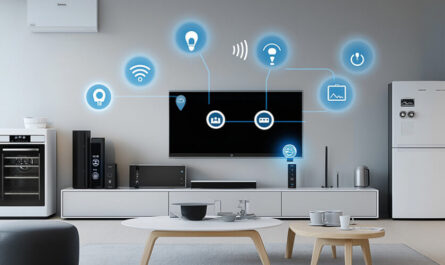Creating the ultimate smart home theatre is all about combining high-quality audio and visual components with the latest smart technology. Whether you’re a movie buff or a sports fan, a well-designed home theatre can take your entertainment experience to a whole new level. Here’s a step-by-step guide to help you build the smart home theatre of your dreams.
Step 1: Choose the Right Room
Start by selecting a room where you can control the lighting and minimise outside noise. A basement or a room without windows works best, as ambient light can impact the viewing experience. Make sure the room has adequate ventilation and enough space to accommodate seating and equipment.
Step 2: Select a Quality Display
The display is the heart of your home theatre setup. There are two main choices:
- Projector and Screen: Ideal for a true cinematic experience, projectors deliver large-scale images and are great for darker rooms.
- Smart TV: If you’re looking for 4K clarity, a large smart TV can provide stunning picture quality and built-in streaming capabilities.
Look for models with 4K resolution or higher and HDR (High Dynamic Range) support for vivid colours and enhanced detail.
Step 3: Invest in Surround Sound
Audio quality is essential for an immersive experience. A surround sound system with at least 5.1 channels (five speakers and one subwoofer) will give you that theater-quality sound. Alternatively, you can choose a Dolby Atmos system for a more immersive soundstage.
If you want a cleaner setup, opt for a high-quality soundbar with wireless subwoofers and surround speakers. Make sure your audio system supports Wi-Fi or Bluetooth connectivity for easier integration with other smart devices.
Step 4: Integrate Smart Lighting
Lighting plays a huge role in setting the mood for your theatre. Use smart LED strips or smart bulbs that can dim or change colours to suit the content you’re watching. Look for lights that are compatible with voice commands via Alexa, Google Assistant, or Siri so you can easily adjust the ambience.
Step 5: Choose a Media Streaming Device
Smart TVs come with built-in streaming services, but if you’re using a projector or want more options, consider adding a streaming device like Apple TV, Roku, Fire TV Stick, or Google Chromecast. Make sure the device supports 4K streaming and is compatible with your preferred apps.
Step 6: Optimise Your Wi-Fi Network
A strong, stable Wi-Fi connection is crucial for streaming content without interruptions. Invest in a high-speed router with dual-band or mesh Wi-Fi capability to ensure seamless connectivity across your home theatre setup. If your router is far from the theatre room, consider a Wi-Fi extender.
Step 7: Add Smart Home Control
A smart home theatre isn’t complete without smart control. Consider using a universal remote or a smart home hub that integrates with all your devices, like Amazon Echo or Google Nest Hub. With voice commands, you can control everything from the lights to the sound system and streaming device.
Step 8: Arrange Comfortable Seating
Comfortable seating is essential for a premium theatre experience. Look for reclining seats with built-in cup holders or consider a sectional couch for a cosy setup. Ensure the seating arrangement provides a clear line of sight to the screen without causing neck strain.
Step 9: Install Acoustic Treatments
Acoustic treatments can enhance sound quality by reducing echo and absorbing excess noise. Use acoustic panels, heavy curtains, or carpeting to improve sound clarity. Additionally, consider placing area rugs or soft furnishings around the room to further enhance acoustics.
Step 10: Integrate Voice Assistant Commands
For a hands-free experience, integrate voice assistants like Alexa, Google Assistant, or Siri with your home theatre system. Set up routines, such as “Movie Night,” that automatically dim the lights, power on the projector, and set the volume to your preferred level with a single command.
Step 11: Test and Calibrate Your System
Once your setup is complete, take the time to calibrate the audio and video settings. Most TVs and sound systems come with built-in calibration tools. Use them to fine-tune the settings and achieve the best picture and sound quality for your space.
Final Thoughts
Setting up a smart home theatre can be an exciting project that transforms your entertainment experience. By carefully selecting each component and ensuring compatibility with smart devices, you can create a seamless and immersive theatre right in your home. Get ready to enjoy movies, games, and shows in a whole new way!







